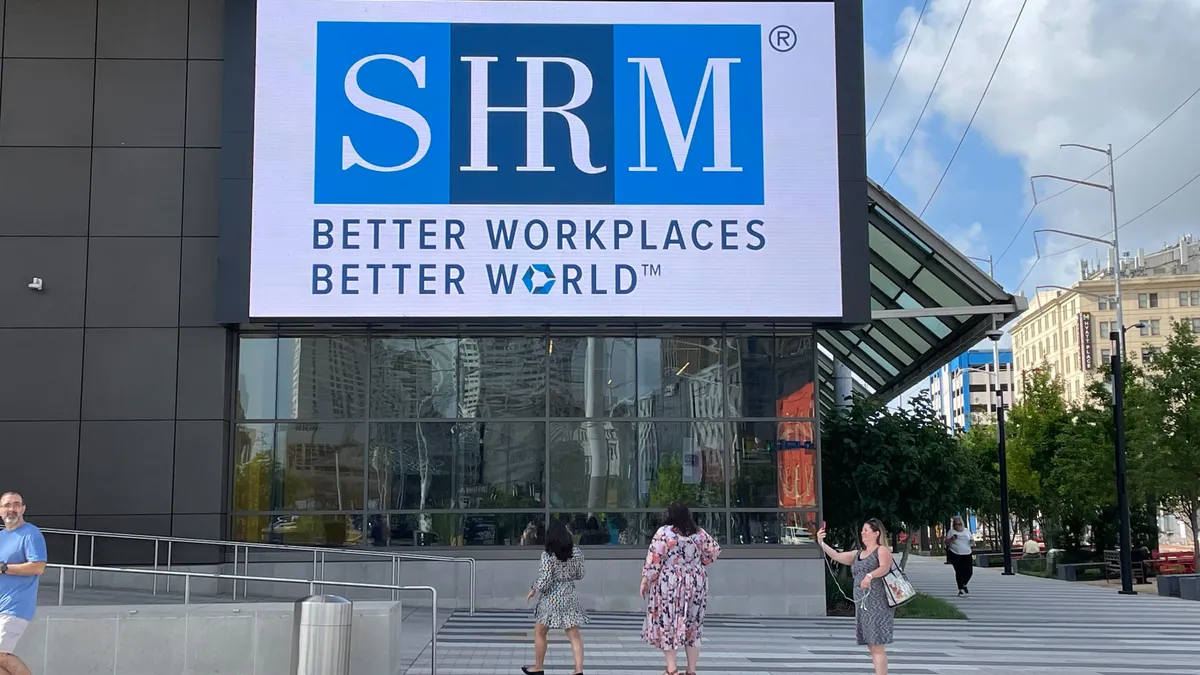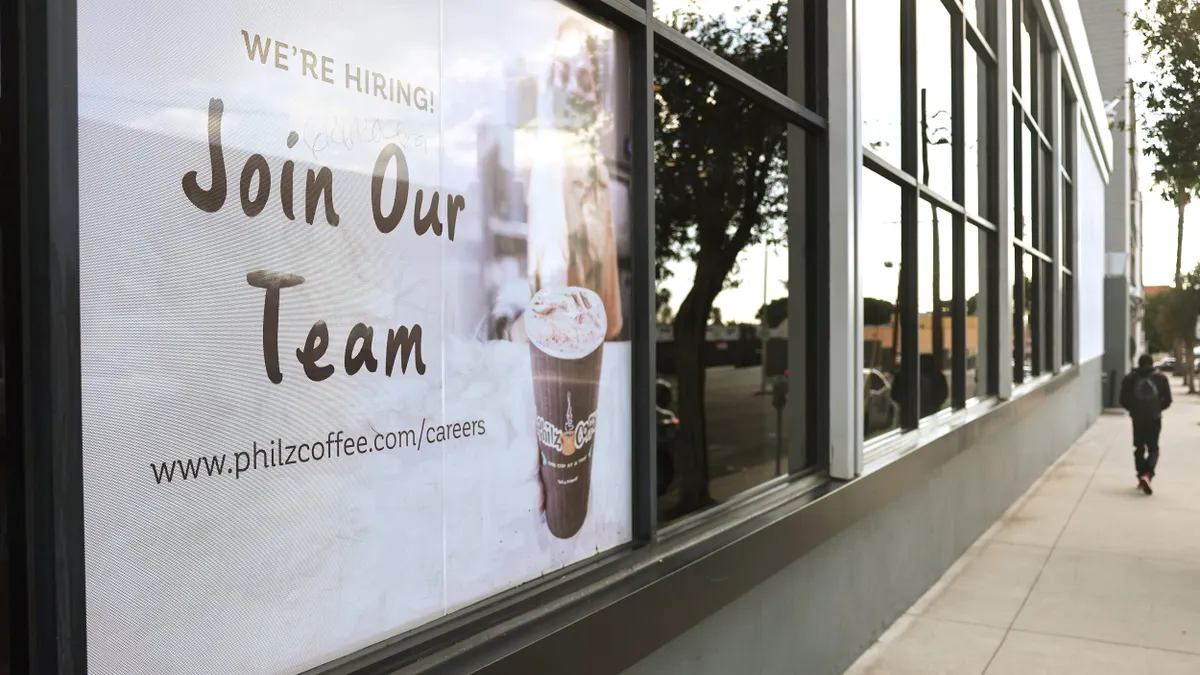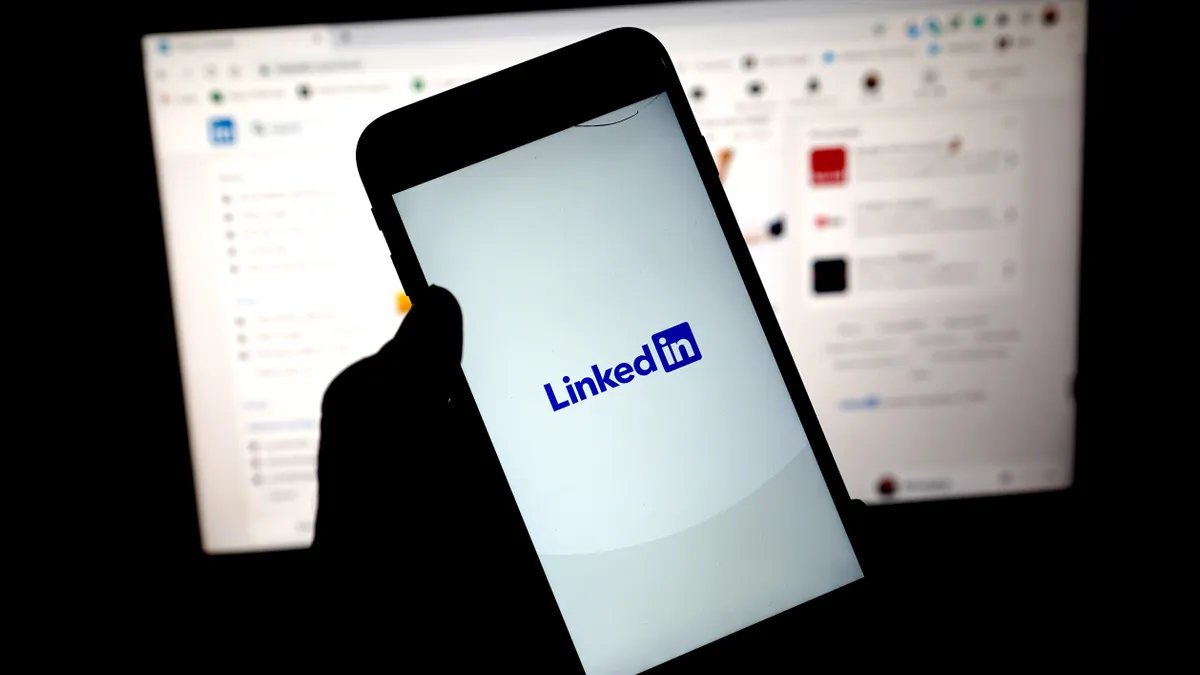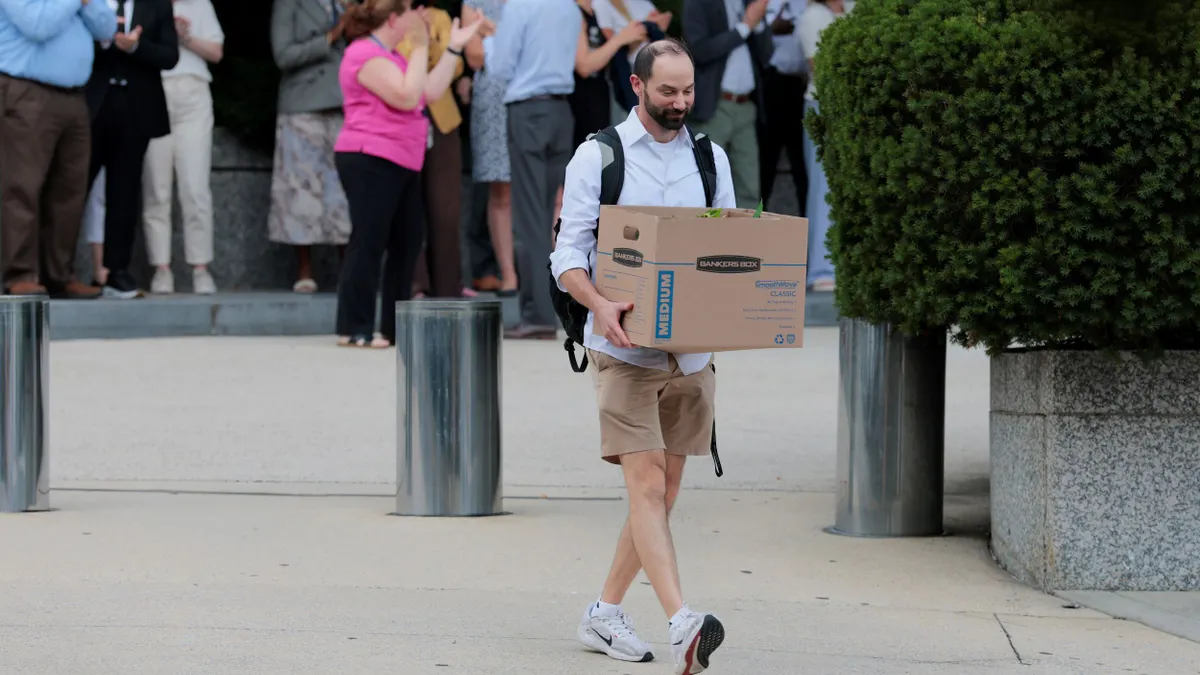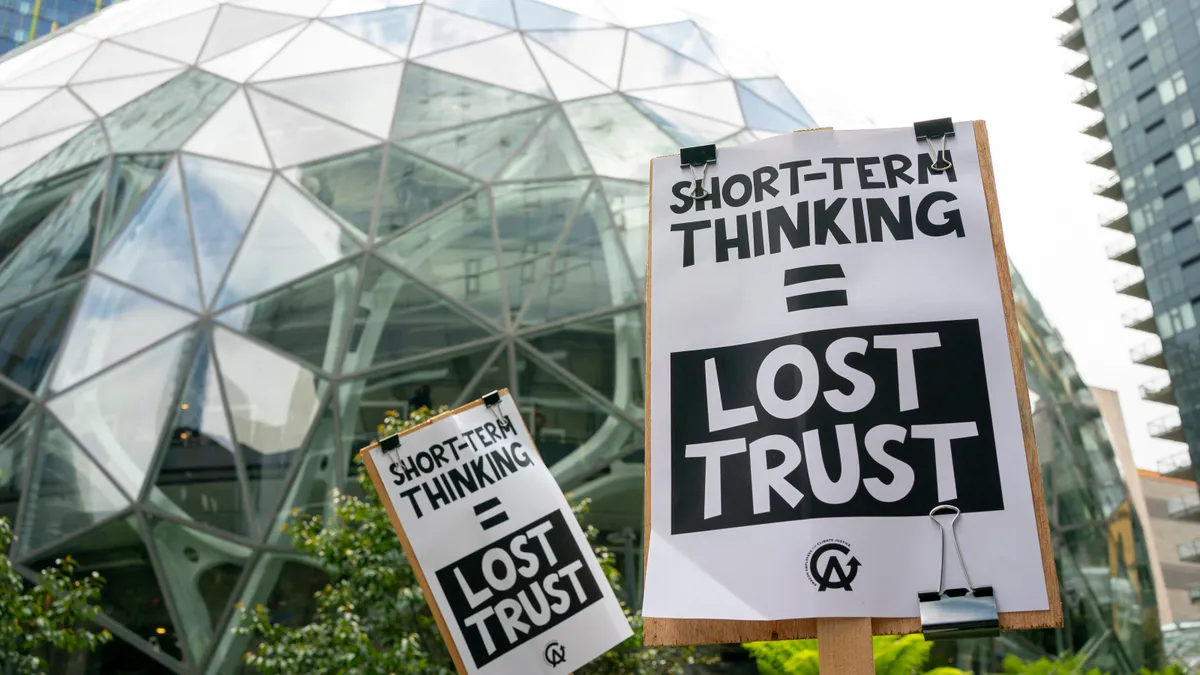NEW ORLEANS — The second day of the Society for Human Resource Management annual conference and expo built on many of the themes of day one, with plenty of discussion of diversity and inclusion, employee satisfaction and the tried-and-true trope of HR helping employees bring their “whole selves” to work.
While attracting and retaining employees is top of mind for many, sessions brought to light a deeper desire among HR pros to understand workers’ motivations and behavior.
The behavior of job-seekers is changing
For many HR pros, the experience of trying to acquire talent is like chasing a ball down a hill, Tony Buffum, vice president of HR client strategy at Upwork, said during his session. Just as recruiters manage to fill one position, turnover seems to create two more empty roles.
With the current market demands and the disappearance of supportive features like pensions, talent now has more leverage and the friction of leaving a position has depleted, Buffum said. He suggested hiring managers think of hiring more like “leasing” than talent “acquisition.”
Buffum also pointed to research that the behavior of those seeking work is changing, with more people — especially younger workers — opting into freelance and independent contractor roles. By 2028, he said, we could see as many as 90 million independent contractors.
Workers and future workers are pursuing alternative means of education as well. While the pandemic was almost certainly a major factor in declining university enrollments last spring, young people are beginning to doubt the value of a university education when they can learn on platforms like YouTube and LinkedIn, Buffum pointed out. Employers are noticing this as well, rapidly dropping degree requirements.
The implications are big for learning pros. By 2025, Buffum said, nearly 50% of the workforce could need reskilling to keep up with the demands of the shifting digital world.
‘Belonging’ is the DEI word rising to the fore
“Belonging” may be left off the DEI acronym, but diversity professionals — along with other HR pros — are increasingly recognizing its importance. Kyle M.K., a recruitment “evangelist” at Indeed, presented findings on employee happiness. While employees said they believed the top influences on workplace happiness were compensation, flexibility and inclusion, the actual aspects that most affected happiness turned out to be an energizing environment, a feeling of belonging and a sense of trust.
M.K. facilitated a panel discussion that featured Adrienne Alberts, chief diversity officer at Red Cross, and Mayerland Harris, group vice president of talent at H-E-B. Both panelists emphasized the importance of purpose and mission to their own workplace happiness. Alberts pointed to the work Red Cross does to help those who are suffering, and Harris talked of the disaster relief work H-E-B does in the community. These elements of the work can help energize workers and foster belonging and trust, they said.
Employees don’t need to work at charitable organizations to connect with their employer’s mission and purpose, Alberts emphasized; they just need to understand the need they’re meeting.
Authentic relationships can also dramatically increase a worker’s sense of belonging. Harris talked of friendships with co-workers and their presence during major life events like weddings, the birth of children and the death of parents. Alberts echoed this sentiment as well. “Workers stay in a place where they have a best friend at work,” she said — someone who can listen to their secrets and listen to them vent.
Employees are bringing their whole selves to work — including their political selves
Following on the theme of employees drawing on their personal selves in the workplace, employee activism is on the rise, Ogletree Deakins' managing director, Joseph L. Beachboard, and director of client training, Dennis Alan Davis, explained during their session. But this isn’t a bad thing, they said — just something that employers need to understand.
Under the National Labor Relations Act, employees have the right to “protected, concerted activity” under Section VII, the presenters said. While historically, this related narrowly to wage and hour issues and other “employment terms and conditions,” Jennifer Abruzzo, general counsel for the National Labor Relations Board, has announced the inclusion of social justice, economic justice and racial justice advocacy among “protected concerted activity,” Davis and Beachboard warned, noting this may muddy the waters in terms of employer actions toward speech.
While employee activism can be complicated and difficult for organizations to manage, Davis and Beachboard didn’t discourage open talk about politics, noting that self-expression is a real need people have. “It takes a lot of energy for me to cover up who I am,” Davis said, citing the example of how George Floyd’s death affected him personally and how he needed to speak about it with colleagues the next day.
But guardrails can help guide conversations. Teach effective communication through an emphasis on certain framings like I-statements, they suggested. Give employees time to build relationships and the downtime to have fun, which can increase trust and give them the familiarity to securely have difficult conversations. Employers can also coach managers and supervisors to actively listen and make employees feel heard, they said.



